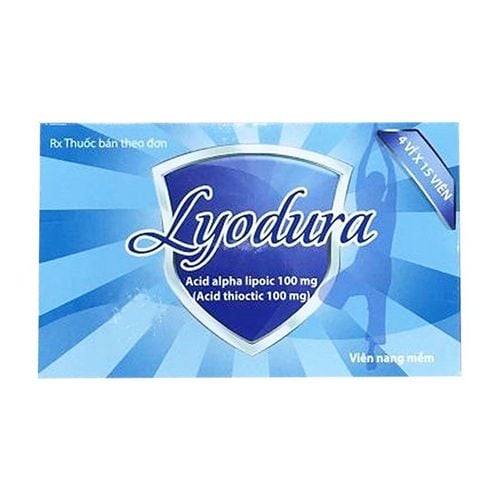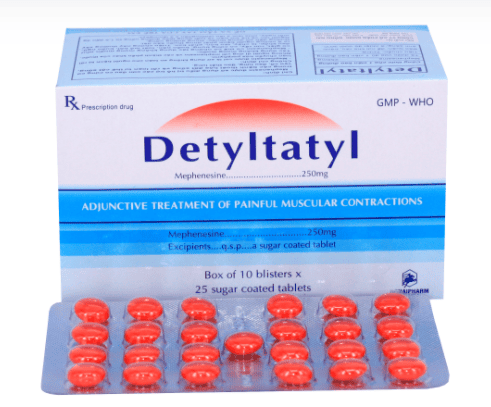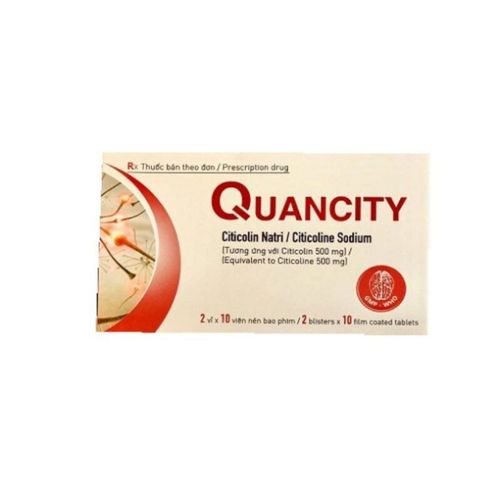This is an automatically translated article.
Wogestan drug with the main ingredient is Tolperison hydrochloride, used in the treatment of organic neurological disorders, increased muscle tone, muscle spasms, movement diseases, rehabilitation after orthopedic surgery and treatment of vascular diseases.
1. What is Wogestan?
Wogestan drug belongs to the group of muscle relaxants and increases muscle tone, is made in the form of film-coated tablets and packed in boxes of 03 blisters, 10 tablets x 10 tablets or a bottle of 100 tablets.
Wogestan medicine has the main ingredient Tolperison hydrochloride 150mg.
2. Indications for taking Wogestan
Wogestan is used in the following cases:
Treatment of skeletal muscle hypertonia in organic neurological disorders such as stroke, pyramidal lesions, encephalomyelitis, multifocal atherosclerosis and disease spinal cord ... Increased muscle tone, muscle spasms and spasms accompanied by movement diseases such as arthropathy of large joints, spondylolisthesis, lumbar and neck syndromes and spinal rheumatism. Rehabilitation of motor function after trauma surgery - orthopedic. Treatment of thromboembolic diseases such as: Raynaud's disease, obstructive atherosclerosis, diabetic vascular disease, disseminated scleroderma, thromboembolic vasculitis... and syndromes appearing on an impaired basis neurovascular distribution (episodic neuropathic dyskinesia).
3. Dosage - How to take Wogestan
Wogestan is used for oral administration and prescribed by doctors and pharmacists.
Dosage of Wogestan refer to the following:
Adults:
Orally, the daily dose is 150 - 450mg Tolperison, divided into 3 equal parts depending on the needs and tolerance of the patient. Administer intramuscularly at a dose of 100mg Tolperison x 2 times/day or a single dose of 100mg Tolperison/day if administered intravenously slowly. Children:
Wogestan injection is not intended for use in children. If the film-coated tablets are used, children under 6 years of age may be given 5 mg of Tolperison/kg body weight/day, these doses are divided into 3 equal parts. In the 6-14 year old group, the daily dose is 2-4 mg Tolperison/kg body weight, these doses are divided into 3 equal parts. Special subjects:
Patients with renal failure: Information on the use of Wogestan in patients with renal failure is limited. However, an increase in the incidence of adverse events was observed in this group of patients. Therefore, for patients with moderate renal impairment, it is necessary to determine the dose of Tolperison for each patient in combination with close monitoring of the disease status and renal function. The use of tolperison is not recommended in patients with severe renal impairment. Hepatic impairment: Information on the use of Wogestan in patients with hepatic impairment is limited, but an increased incidence of adverse events has been observed in this group of patients. Therefore, for patients with moderate hepatic impairment, it is necessary to determine the dose of Tolperison for each patient in combination with close monitoring of disease status and liver function. The use of Tolperison is not recommended in patients with severe hepatic impairment. Treatment of Wogestan Overdosage:
Data on Wogestan overdose are rare. The highest daily dose of Tolperison recorded in the literature was up to 600 mg of Tolperison without causing any symptoms of serious toxicity. There is a phenomenon of irritation after treating children with oral doses of 300-600mg Tolperison/day. In acute preclinical toxicity studies, high doses of Wogestan have been associated with ataxia, dyspnoea, and respiratory paralysis. Wogestan has no specific antidote. If an overdose of Wogestan occurs, supportive and symptomatic treatment should be given.
4. Contraindications when taking Wogestan
Wogestan is not used in the following cases:
Patients with hypersensitivity, history of allergy to Tolperison or substances with similar chemical structure to Eperison and any other excipients in the drug. Patients with weakness.
5. Side effects when taking Wogestan
During the use of Wogestan, patients may experience some unwanted side effects, mainly manifestations on the skin, subcutaneous soft tissue, systemic disorders, neurological disorders and disorders. Gastrointestinal disturbances such as:
Hypersensitivity reactions: Shortness of breath, hypotension, rash, urticaria, redness, itching, angioedema, tachycardia. Most reactions are not serious and are reversible on their own. Very rare, life-threatening hypersensitivity reactions. Confusion and increased sweating are rare. Patients should inform their doctor or pharmacist of any unwanted effects encountered while using Wogestan.
6. Precautions when using Wogestan
Wogestan 150 is prescribed by a doctor, so patients need to carefully refer to the drug information listed on the product packaging and use the drug as prescribed by the doctor, do not self-medicate. Here are some notes before taking Wogestan as follows:
Use Tolperison with caution in patients with allergies, patients with liver or kidney failure. Adverse hypersensitivity reactions have been reported with the use of Tolperison in patients, ranging from mild skin reactions to severe reactions such as generalized anaphylaxis. In general, the risk of hypersensitivity reactions when taking Wogestan is higher in women, patients with a history of allergy or hypersensitivity to other drugs. Tolperison should be used with caution in patients who are sensitive to Lidocaine because cross-reactivity may occur. Patients should be warned about the possibility of hypersensitivity reactions when using Wogestan. In case of any manifestation of hypersensitivity, the drug should be discontinued immediately and consult a doctor promptly. Wogestan should not be reused in patients with known hypersensitivity to Tolperison. Although there have been reports of animal testing, Tolperison is not teratogenic, but patients need to be cautious when using Wogestan while pregnant. Due to the lack of adequate clinical data, Tolperison should not be used during pregnancy, especially during the first trimester of pregnancy, unless the potential benefits of use are clearly outweighed by the physician. relative to the risk to the fetus. It is not known whether Tolperison is excreted in human milk, therefore Tolperison should not be used while breastfeeding. Because Wogestan can cause dizziness and lightheadedness, caution should be exercised when driving and operating machinery. If patients during the treatment of Wogestan experience dizziness, loss of concentration, dizziness, blurred vision, muscle weakness, they should consult a doctor. Above is all information about Ketrel drug, patients need to carefully read the instructions for use, consult a doctor / pharmacist before using. Note, Wogestan is a drug prescribed by a specialist, patients absolutely cannot use it on their own.













